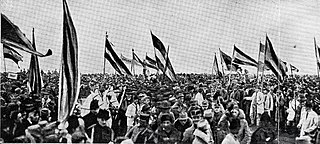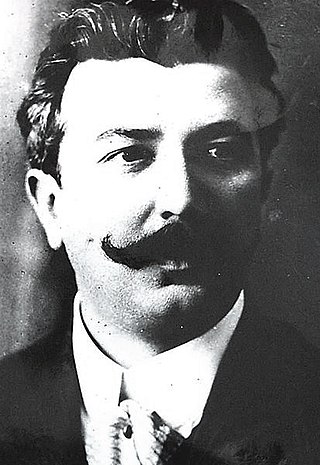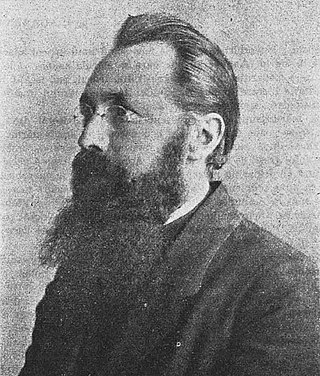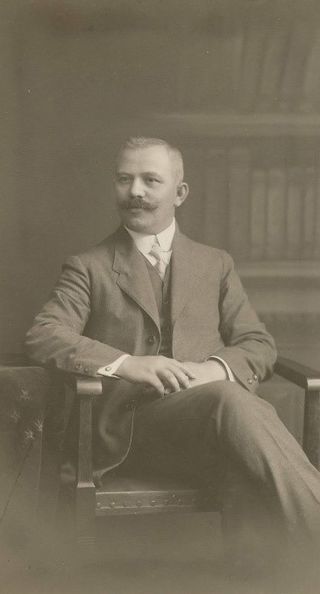| |||||
| Decades: | |||||
|---|---|---|---|---|---|
| See also: | |||||
Events from the year 1923 in Romania. The year saw the country adopt a new constitution.
| |||||
| Decades: | |||||
|---|---|---|---|---|---|
| See also: | |||||
Events from the year 1923 in Romania. The year saw the country adopt a new constitution.

Great Union Day is a national holiday in Romania, celebrated on 1 December, marking the unification of Transylvania, Bessarabia, and Bukovina with the Romanian Kingdom in 1918, something that is known as the Great Union. This holiday was declared after the Romanian Revolution and commemorates the Great National Assembly of the delegates of ethnic Romanians held in Alba Iulia, who declared the Union of Transylvania with Romania.
Andrei Marga is a Romanian philosopher, political scientist, and politician. Rector – for the second time – of the Babeș-Bolyai University in Cluj-Napoca, he was a member of the Christian Democratic National Peasants' Party (PNŢCD), serving as Minister of Education in the Democratic Convention (CDR) coalition governments of Victor Ciorbea, Radu Vasile, and Mugur Isărescu (1997–2000). In January 2001, he replaced Ion Diaconescu as PNŢCD president, but resigned from this position in July 2001, amid political tensions within the party. He subsequently formed a new political party, more specifically the Popular Christian Party later during the same year. Later on, he became a member of the National Liberal Party (PNL).

Elena A. Bacaloglu, also known as Bakaloglu, Bacaloglu-Densusianu, Bacaloglu-Densușeanu etc., was a Romanian journalist, literary critic, novelist and fascist militant. Her career in letters produced an introduction to the work of Maurice Maeterlinck (1903), several other critical essays, and two novels. She married and divorced writer Radu D. Rosetti, then Ovid Densusianu, the Symbolist poet and literary theorist.

George or Gheorghe Ranetti, born George Ranete, was a Romanian poet, journalist and playwright, known as the founder and editor of Furnica magazine. A professional journalist from the late 1890s, he alternated between political dailies and literary reviews, being sympathetic to Romanian nationalism and traditionalism, and working under Ion Luca Caragiale at Moftul Român. By 1904–1906, he was active on the margin of left-wing traditionalism, or Poporanism, showing himself sympathetic to republican or generically anti-elitist ideologies. Such views and influences seeped into his activity at Furnica, which was for decades a prominent institution in Romanian humor.

Paul Niculescu-Mizil was a Romanian communist politician. Joining the Romanian Communist Party due to his background and intellectual aspirations, he was prominent in the agitprop department during Gheorghe Gheorghiu-Dej's rule. Under Nicolae Ceaușescu, he went from handling foreign affairs in the late 1960s to holding ministerial posts in the 1970s to a marginal position in the 1980s. After the regime's collapse in 1989, he spent time in prison before emerging as a vocal defender of the system he had served.

Ion Agârbiceanu was an Austro-Hungarian-born Romanian writer, journalist, politician, theologian and Greek-Catholic priest. Born among the Romanian peasant class of Transylvania, he was originally an Orthodox, but chose to embrace Eastern Catholicism. Assisted by the Catholic congregation of Blaj, he graduated from Budapest University, after which he was ordained. Agârbiceanu was initially assigned to a parish in the Apuseni Mountains, which form the backdrop to much of his fiction. Before 1910, Agârbiceanu had achieved literary fame in both Transylvania and the Kingdom of Romania, affiliating with Astra cultural society in 1912; his work was disputed between the rival schools of Sămănătorul and Poporanism. After a debut in poetry, he became a highly prolific author of novels, novellas, and other forms of prose, being rated as "Chekhovian" or "Tolstoyan" for his talents in describing the discreet suffering of common folk.
Dumitru Caracostea was a Romanian folklorist, literary historian and critic.

Ion Lapedatu was finance minister of Romania (1926-1927), Governor of the National Bank of Romania (1944-1945), and honorary member of the Romanian Academy.

Ioan Bianu was an Imperial Austrian-born Romanian philologist and bibliographer. The son of a peasant family from Transylvania, he completed high school in Blaj, where he became a disciple of Timotei Cipariu and Ioan Micu Moldovan. As a youth, he espoused Romanian nationalism, and came into conflict with the Austro-Hungarian authorities, before finally emigrating to the Romanian Old Kingdom in 1876. There, he attended the University of Bucharest, later joining the faculty, where he taught Romanian literary history. He was affiliated with the Romanian Academy Library for over half a century, transforming the institution from the meager state in which he found it, and overseeing a five-fold increase of its collection. He helped author two important multi-volume works detailing early books and manuscripts from his country, and was a founder of library and information science in his adoptive country. Near the end of his life, struggling with deafness, Bianu withdrew from the Library in favor of his friend Radu R. Rosetti, but went on to serve as president of the Romanian Academy.
Dumitru Iuca was a Romanian politician.

Alexandru I. Lapedatu was Cults and Arts and State minister of Romania, President of the Senate of Romania, member of the Romanian Academy, its president and general secretary.
Events from the year 1946 in Romania. The year started with the end of the royal strike and ended with the Romanian Communist Party win the first election following the introduction of women's suffrage.
Events from the year 1934 in Romania. The year saw the country sign the Balkan Pact.
Events from the year 1932 in Romania. The year saw the birth of two future Woman Grandmasters, Maria Albuleț and Margareta Teodorescu.
Events from the year 1927 in Romania. The year was marked by the death of King Ferdinand and the ascension of King Michael I. The year also saw the further development of the Polish–Romanian alliance and the start of the rise of the Iron Guard.
Events from the year 1926 in Romania. The year saw improved relationships between Romania and Poland and Queen Maria's visit to the United States, while at home the dynastic crisis continued.
Events from the year 1925 in Romania. The year saw Miron Cristea elected the first Patriarch of All Romania and ended with the start of the Romanian dynastic crisis.
Events from the year 1924 in Romania. The year saw the first time that the country competed as a team in the Summer Olympic Games, and, although the country won no medals, Romania went on to enter every subsequent game apart from 1932 Summer Olympics.
Events from the year 1922 in Romania. The year saw the Dealul Spirii Trial and the crowning of King Ferdinand.
Events from the year 1920 in Romania. The year was marked by the signing of the Treaty of Trianon and Treaty of Paris, and a general strike.